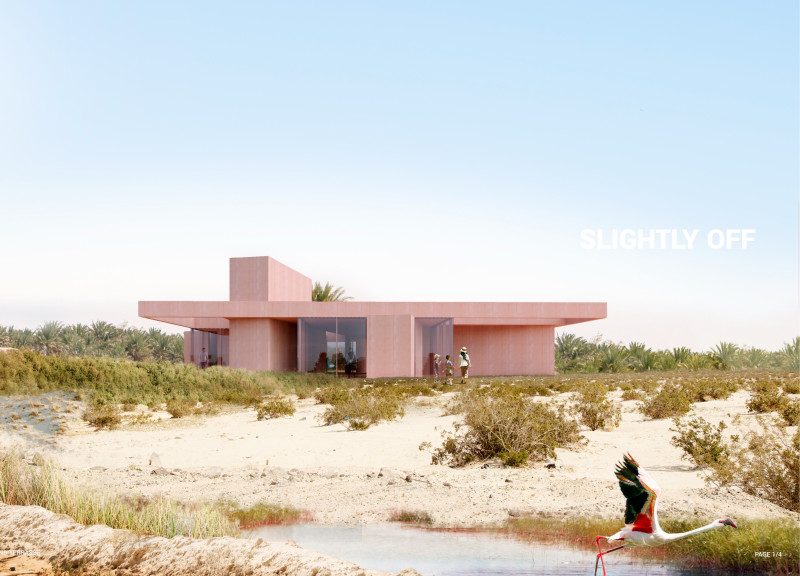5 key facts about this project
The design at Al-Wathba Wetland Reserve integrates built forms with the natural landscape. Located in an area rich in ecological diversity, the facility serves educational and recreational purposes. Its design concept emphasizes a careful balance between open areas and enclosed spaces, using a cross-shaped plan that tilts slightly off-axis to create engaging experiences for visitors.
Geometric Configuration
The cross plan is central to the overall structure, facilitating both functionality and visitor experience. The slight tilt of the building introduces dynamic volumes, allowing for interesting connections with the natural surroundings. This orientation enhances sightlines, enabling users to engage with the landscape and appreciate the various habitats within the wetland.
Material Considerations
Material choices in the design are closely linked to the environment. Light-colored sand and pinkish hues draw inspiration from the local landscape. The porous walls provide nesting opportunities for local wildlife, reflecting an approach that values aesthetics and biodiversity. This connection to materials fosters a relationship between the architecture and its ecological context.
Functional Arrangement
The internal layout of the building encourages interaction. Spaces such as the information center and café are positioned to promote engagement among visitors. This arrangement ensures a smooth transition between informative experiences and opportunities to observe the wetlands. Clear sightlines to the nature reserve enhance educational aspects while reinforcing a connection to local ecology.
Sustainable Design Elements
The design incorporates passive temperature control through strategic shading from opaque elements, which create shadows on the glazed façades. This feature not only improves energy efficiency but also contributes to visitor comfort. By focusing on sustainable practices, the design responds effectively to its environment, fostering a balance between architecture and nature.
The building’s unique configuration allows natural light to enter while providing shelter, enhancing the atmosphere within and giving visitors an inviting way to connect with the wetlands.
























































